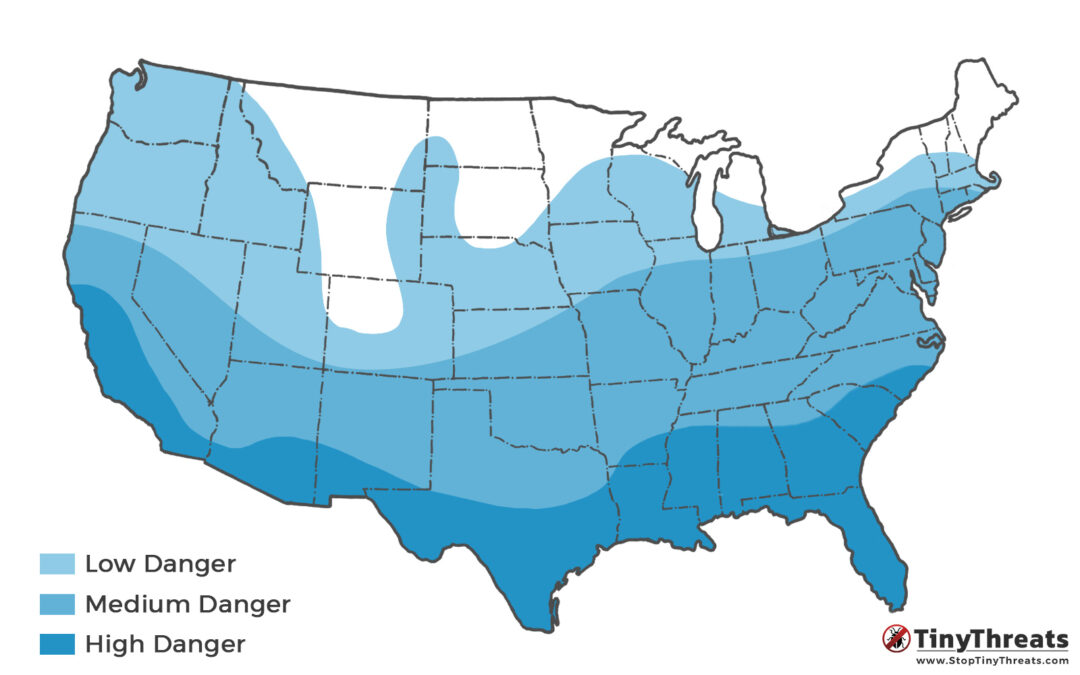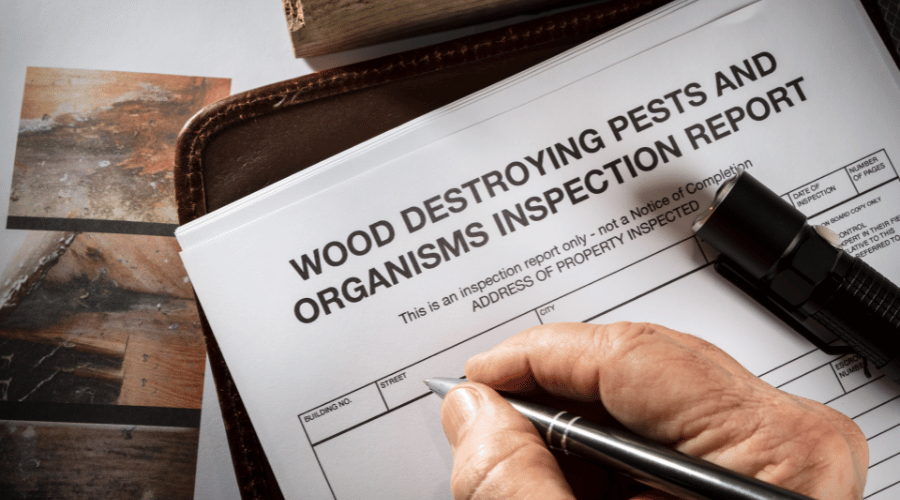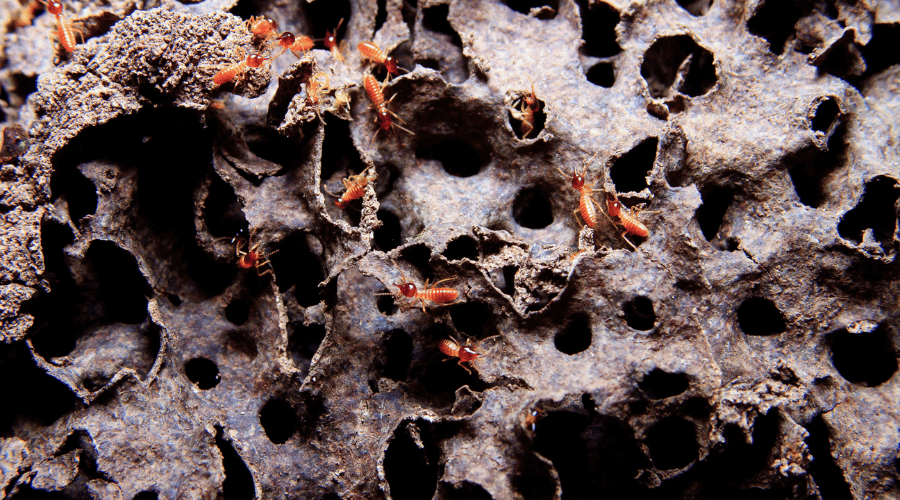While not the most exciting topic, termite poop is actually an important warning sign for homeowners.
Learning to identify termite droppings can be critical to prevent an infestation going on unnoticed for years, creating thousands of dollars in damages.
Read on to learn more and be prepared for potential infestations of this pest.
Table of Contents
What are Termite Droppings / Frass?
Like most animals, when termites eat, they leave behind poop. These termite droppings, also called Frass, are then thrown out of the colony via kick-out holes.
Since termites find everything they need to live and grow inside their colony within your walls, they are quite hard to notice.
However, the droppings that they throw out of their colony is one important way that we can identify a termite infestation early.
Just like droppings from other animals, termite frass is simply what remains after they digest the wood from your walls.
Drywood/Dampwood vs Subterranean Termites Droppings
One other important fact to remember is that drywood and dampwood termites produce noticeable droppings, while subterranean termites do not.
Subterranean termite species have frass that is wet, mud-like, rather than the dry fecal pellets that drywood and dampwood termites leave behind.
However, subterranean termites don’t “drop” their droppings – they use them to build mud tubes and as material for their nest and tunnels.
In short: If you see termite droppings, they are definitely from drywood or dampwood termites.
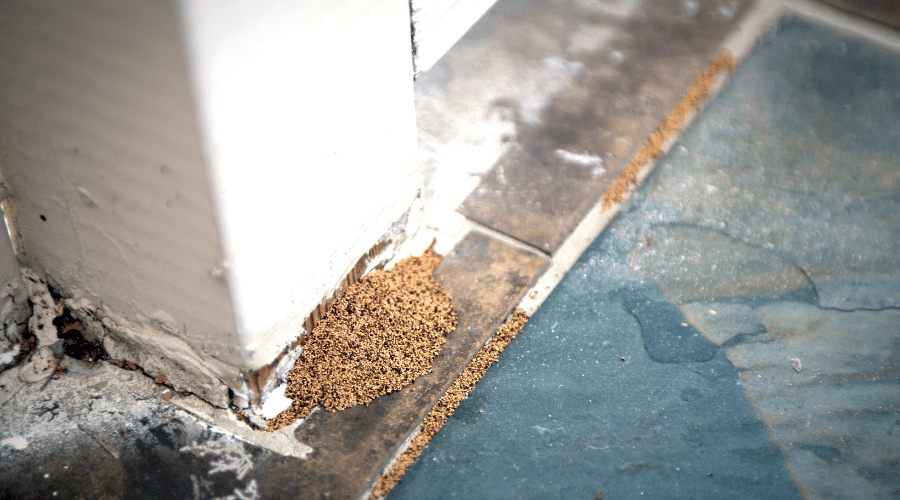
How to identify Termite Droppings
Termite droppings can be hard to tell apart from sawdust because it looks so similar. It’s why it’s sometimes referred to as termite sawdust. So if you haven’t been working with wood recently but find a small pile of what looks like sawdust, check it carefully!
Termite poop/droppings are oval in shape, about 1mm in length, and six-sided. Their color is “wood colored”, anywhere from a light brown to very dark brown, depending on the wood the termites have been eating.
To identify it, you may need to pull out a magnifying glass – but that’s an effort worth making. Identifying a termite colony early can save you hundreds, or even thousands of dollars on both the extermination and the repair.
How to tell if Termite Droppings are old or new?
Sadly, since termite droppings are mostly wood, there is no way to tell if the droppings you found are fresh or months/years old.
However, unless you recently had a termite treatment, any droppings are a cause for concern, no matter how old!
Even if the droppings are a year old, and you’ve never noticed them because they’re in the attic, the termites that left them are most likely still active – and multiplying silently.
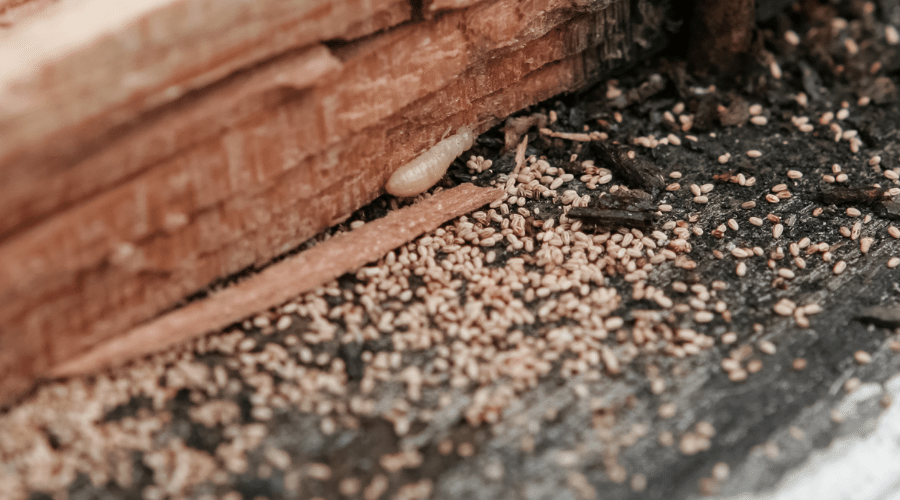
Where to find droppings
Termites leave their droppings near their colony and near where they are currently digging and eating through wood.
As a rule of thumb, you’ll only find termite frass on the floor and near a wall, since that’s where it’s usually pushed out of.
You may also find it near any wooden structure, though. Wooden beams are a common location for termites, as well. Rarely, you might even find droppings next to furniture – which is likely infested, then.
Carpenter Ant Droppings vs Termite Droppings
Carpenter Ants are quite similar to termites in many ways, and even their feces can be confused with each other.
A good way to tell carpenter ant droppings apart from termite droppings is their composition: Ants leave behind fecal matter, but also wood particles, tiny pieces of dirt, sometimes even dead ants. Their droppings are also less solid and evenly-shaped, but rather look similar to wood shavings.
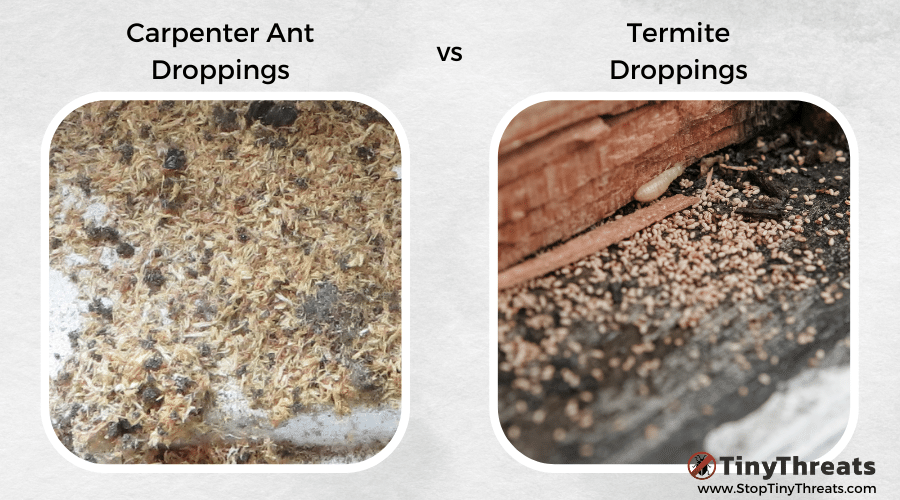
What to do if you find Termite Droppings
Termite droppings are a sure sign you have termites – in which case a thorough assessment by a professional should be your next step.
Since the damage that termites can cause when left to themselves can be enormous, treatment is absolutely necessary.
After a professional assessment, DIY treatments like bait traps may be recommended, but it’s important to know the extent of the infestation first. Your local exterminator will be able to recommend the right type of termite treatment.
Conclusion
Don’t ignore sawdust-like piles of dirt in your home – it could be an early warning sign of termites, saving you thousands in damages.
If the dirt looks like evenly-shaped pellets up close, it is very likely termite droppings. Act fast and trust your local expert.
That’s why termite dust piles are a good thing – if you act on it fast.

